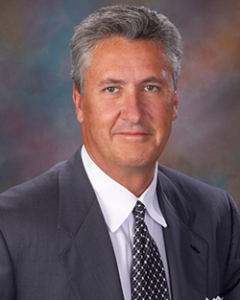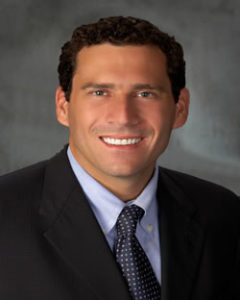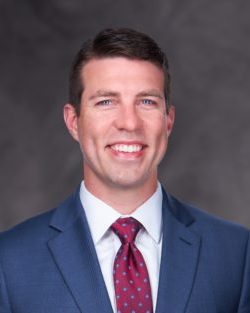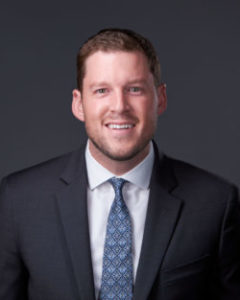The knee is the body’s largest joint. It’s the place where three bones meet: the tibia, the femur, and the patella. The knee is a “hinge” joint, allowing the leg to bend in only one direction. The knee supplies strength for running, squatting, jumping, and turning. But it doesn’t have the range of motion of other joints and has almost no ability to rotate.
The knee is a complex system of supportive and moving parts, including bones, cartilage, muscles, tendons, and ligaments – each of which is subject to injury or disease. Because of this, treatment of knee-related injuries and disorders requires a distinct set of skills and experience.
All Florida Orthopaedic Associates has expert surgeons who are board certified by the American Board of Orthopaedic Surgery and fellowship trained in adult knee reconstruction.
Our certified surgeons provide attentive all-inclusive knee & leg care beginning with a concentrated discussion with each patient about your specific pain or distress. Following this discussion, your surgeon will likely recommend additional assessments including x-rays to assist in determining the source of the cause of your pain. When your comprehensive evaluation is complete, your knee & leg surgeon will explain the diagnosis. They will also discuss all available treatment options. Treating your pain with conservative options is always our priority. However, if non-surgical options won’t accomplish complete success for your needs, our knee & leg surgeons are trained on (and at times assist in the development of) the latest surgical procedures and advancements, including cartilage, restoration, and total knee replacement.
SYMPTOMS & CONDITIONS WE TREAT
When patients suffer from knee pain, the cause can be due to any number of conditions. Our specialists help patients find relief from:
Anterior knee pain is a characterized by a chronic pain over the front and center of the knee joint. It is common in athletes, active adolescents (especially girls) and overweight individuals. Anterior knee pain refers to a variety of conditions which include runner’s knee or patellar tendinitis and chondromalacia of the patella. There is an inter-individual variation in the duration and presentation of pain.
The knee joint is a large, complex joint in the body comprising of three bones, i.e. the lower end of the thigh bone or femur, upper end of the shinbone or tibia, and the kneecap or patella. The patella moves over the joint and allows bending of the knee and straightening of the leg. There are a few major ligaments situated around the knee joint which hold the joint firmly in position and contribute to the stability of the knee.
Arthritis is a general term covering numerous conditions where the joint surface or cartilage wears out. The joint surface is covered by a smooth articular surface that allows pain free movement in the joint. This surface can wear out for a number of reasons; often the definite cause is not known.
When the articular cartilage wears out the bone ends rub on one another and cause pain. This condition is referred to as Osteoarthritis or “wear and tear” arthritis as it occurs with aging and use. It is the most common type of arthritis.
The knee is a complex joint made up of different structures – bones, tendons, ligaments and muscles. They all work together to maintain the knee’s normal function and provide stability to the knee during movement. As we age, the muscles get weaker and the ligaments get looser, causing our knees to become less stable. Weakened tendons and muscles increase our chances of tweaking, spraining, or otherwise injuring our knees.
Knee pain is a common condition affecting individuals of different age groups. It not only affects movement, but also impacts your quality of life. In addition to natural aging of the knee joints, other factors can also make you more prone to pain. Osteoarthritis, trauma, increased body weight, and inadequate muscle strength and flexibility can all cause or contribute to knee issues.
The condition in which a blood clot forms in the deep veins of the body is referred to as Deep Vein Thrombosis (DVT). Clots form when blood thickens and clumps together. DVT occurs most often in the deep veins of the leg and thighs.
A bursa is a small fluid-filled sac found between soft tissues and bones. It lubricates and acts as a cushion to decrease friction between bones when they move. Bursitis refers to the inflammation and swelling of the bursa. Goosefoot bursitis or pes anserine bursitis is the inflammation of the bursa present between the tendons of the hamstring muscle and the tibia (shinbone) on the inner side of the knee.
Goosefoot bursitis is often caused due to repetitive friction on the bursa, overuse of the joints during sports, osteoarthritis of the knee, obesity, medial meniscus tear, tight hamstring muscles and incorrect training techniques.
The anterior cruciate ligament, or ACL, is one of the major ligaments of the knee that is located in the middle of the knee and runs from the femur (thigh bone) to the tibia (shin bone). It prevents the tibia from sliding out in front of the femur. Together with posterior cruciate ligament (PCL) it provides rotational stability to the knee.
An ACL injury is a sports related injury that occur when the knee is forcefully twisted or hyperextended. An ACL tear usually occurs with an abrupt directional change with the foot fixed on the ground or when the deceleration force crosses the knee. Changing direction rapidly, stopping suddenly, slowing down while running, landing from a jump incorrectly, and direct contact or collision, such as a football tackle can also cause injury to the ACL.
Pressure applied on the knees with constant kneeling, conditions such as gout and rheumatoid arthritis, a direct blow to the kneecap while playing sports such as basketball, football and wrestling, or due to infection.
Meniscal tears are one of the most frequently reported injuries to the knee joint. The meniscus is a C-shaped fibrocartilaginous structure in the knee incompletely covering the surface of the tibia where it articulates with the femur. It consists of the medial meniscus, on the inner part of the knee, and the lateral meniscus on the outer aspect of the knee.
The menisci act as shock absorbers protecting the articular surface of the tibia as well as assisting in rotation of the knee. As secondary stabilizers, the intact menisci interact with the stabilizing function of the ligaments and are most effective when the surrounding ligaments are intact.
Osgood-Schlatter disease is a condition characterized by swelling of the bump (anterior tibial tubercle) present on the upper part of the tibia, below the knee. It is the most common cause of knee pain in young athletes. Osgood-Schlatter disease affects children participating in sports activities such as football, gymnastics, basketball, and sprinting. Any sporting activity creates stress over the growth plate, at the top of tibia. A growth plate is a layer of cartilage present at the end of bone which is responsible for bone growth. It affects girls in the age group of 10 to 11 years and boys in 13 to 14 years age group and generally resolves with age.
Osteonecrosis is a condition in which death of a section of bone occurs because of lack of blood supply to it. It is one of the most common causes of knee pain in older women. Women over the age of 60 years of age are commonly affected, three times more often than men.
Osteonecrosis of the knee is most commonly seen in the femoral condyle, usually on the inner side of the knee (the medial femoral condyle). However, the condition can also occur on the outside of the knee (the lateral femoral condyle) or on top of the shin bone (the tibial joint surface), known as the tibial plateau.
Posterior cruciate ligament (PCL), one of four major ligaments of the knee is situated at the back of the knee. It connects the thighbone (femur) to the shinbone (tibia). The PCL limits the backward motion of the shinbone.
PCL injuries are very rare and are difficult to detect than other knee ligament injuries. Cartilage injuries, bone bruises, and ligament injuries often occur in combination with PCL injuries. Injuries to the PCL can be graded as I, II or III depending on the severity of injury. In grade I the ligament is mildly damaged and slightly stretched, but the knee joint is stable. In grade II there is partial tear of the ligament. In grade III there is complete tear of the ligament and the ligament is divided into two halves making the knee joint unstable.
Runner’s knee, also called patellofemoral pain syndrome refers to pain under and around your kneecap. Runner’s knee includes a number of medical conditions such as anterior knee pain syndrome, patellofemoral malalignment, and chondromalacia patella that cause pain around the front of the knee. As the name suggests, runner’s knee is a common complaint among runners, jumpers, and other athletes such as skiers, cyclists, and soccer players.
The knee joint is one of the largest joints in the body. This highly complex joint has several tissues supporting and stabilizing its movement:
- Condyles and menisci: Bony protrusions of the thigh bone called condyles fit snugly into the depressions of the lateral and medial menisci(spongy cartilage) of the shin bone
- Ligaments: bands of tissue criss cross across the joint bones, connecting and holding them in place
- Capsules: tissue that connects the bones of the knee, by forming a sleeve over the joint
- Muscles: provide secondary stability
Damage to any of these supportive structures causes the instability of the knee joint. This can be caused by sudden twisting of the knee, tears of the meniscus, ligament or capsule, osteoarthritis of the knee (wear and tear of the cushioning cartilage tissue between bones) and sports injuries. When these tissues get injured, the patella or knee cap can move out of its groove in the knee joint and lead to instability. An unstable knee causes pain, swelling, stiffness and a tendency of the joint to buckle or “give way”.
The anterior cruciate ligament is one of the four major ligaments of the knee that connects the femur (thigh bone) to the tibia (shin bone) and helps stabilize the knee joint. Anterior cruciate ligament (ACL) injury is one of the common injuries of the knee. An injury to the ACL commonly occurs during sports or activities that involve twisting, overextension, landing from a jump incorrectly and abrupt change in direction or speed of movements.
ACL injuries are more common in women than men due to anatomical differences which include:
- Women have a smaller ACL, a wider pelvis and an increased incidence of inward knee pointing.
- Women have less strength in the muscles as compared to men. In addition, women use their quadriceps muscles more than men for stability and take more time to develop muscular force resulting in greater stress on the ACL.
- Women have looser knees and a greater range of motion as compared to men.
TREATMENTS
Anterior cruciate ligament (ACL) reconstruction is surgery to reconstruct the torn ligament of your knee with a tissue graft. Anterior cruciate ligament is one of the four major ligaments of the knee that connects the femur (thigh bone) to the tibia (shin bone) and helps stabilize the knee joint. Ligaments are tough, non-stretchable fibers that hold your bones together. Anterior cruciate ligament prevents excessive forward movement of the lower leg bone (tibia) in relation to the thigh bone (femur) as well as limits rotational movements of the knee.
Anterior cruciate ligament injury is a common knee ligament injury. If you have injured your anterior cruciate ligament, surgery may be needed to regain full function of your knee.
Total knee replacement (TKR) is a surgical procedure in which the worn out or damaged surfaces of the knee joint are removed and replaced with new artificial parts.
The knee is made up of – the femur (thigh bone), the tibia (shin bone), and patella (kneecap). The meniscus, a soft cartilage between the femur and tibia serves as a cushion and helps absorb shock during motion. Arthritis (inflammation of the joints), injury, or other diseases of the joint can damage this protective layer of cartilage, causing extreme pain and difficulty in performing daily activities. Arthritis is a general term covering numerous conditions where the joint surface or cartilage wears out. In an arthritic knee:
- The cartilage lining is thinner than normal or completely absent. The degree of cartilage damage and inflammation varies with the type and stage of arthritis.
- The capsule of the arthritic knee is swollen.
- The joint space is narrowed and irregular in outline; this can be seen in an X-ray image.
- Bone spurs or excessive bone can also build up around the edges of the joint.
The knee joint, which appears like a simple hinge-joint, is one of the most complex joints. It consists of the femur (thighbone), tibia (shinbone) and patella (kneecap). The knee is a synovial joint, which means it is lined by synovium. The synovium produces fluid lubricating and nourishing the inside of the joint. Articular cartilage is the smooth surfaces at the end of the femur and tibia. It is the damage to this surface, which causes arthritis.
Arthroscopy is a surgical procedure in which an arthroscope is inserted into a joint. Arthroscopy is a term that comes from two Greek words, arthro-, meaning joint, and -skopein, meaning to examine.
Arthroscopy is performed in a hospital operating room under general anesthetic.
Knee implants are artificial devices that form the essential parts of the knee during a knee replacement surgery. The knee implants vary by size, shape, and material. Implants are made of biocompatible materials that are accepted by the body without producing any rejection response. Implants can be made of metal alloys, ceramics, or plastics, and can be joined to the bone. The metals used include stainless steel, titanium, and cobalt chrome; whereas, the plastic used is polyethylene.
Knee Osteotomy is a surgical procedure in which the upper shinbone (tibia) or lower thighbone (femur) is cut and realigned. It is usually performed in arthritic conditions affecting only one side of your knee and the aim is to take pressure off the damaged area and shift it to the other side of your knee with healthy cartilage. During the surgery, your surgeon will remove or add a wedge of bone either below or above the knee joint depending on the site of arthritic damage.
Mobile-bearing rotational platform knee implants are implants specially designed to reduce wear and improve long-term performance. They are recommended for individuals with an active lifestyle and those who are overweight.
Total knee arthroplasty, also called as total knee replacement is a surgical option to treat arthritis of the knee where the complete knee joint is replaced with artificial knee components. The surgery can be performed using traditional approach using larger incisions or with minimally invasive procedure where multiple smaller incisions are used to perform total knee arthroplasty. Less invasive approach has gained more popularity than the traditional open surgery because of the advantages such as:
- Minimal tissue damage – muscles and tendons are avoided or separated, not cut
- Quicker and less painful rehabilitation
- Smaller incisions and minimal scarring – two incisions of 1½ to 2 inches each, rather
than one 10- to 12-inch incision - Minimized hospital stay – 1-2 days (vs. 3-5 days); some patients go home in less
than 24 hours - Minimal blood loss and less need for pre-surgery blood donation
- Faster return to work and daily activities
Total knee replacement (TKR) is a surgical procedure in which the worn out or damaged surfaces of the knee joint are removed and replaced with new artificial parts.
The knee is made up of – the femur (thigh bone), the tibia (shin bone), and patella (kneecap). The meniscus, a soft cartilage between the femur and tibia serves as a cushion and helps absorb shock during motion. Arthritis (inflammation of the joints), injury, or other diseases of the joint can damage this protective layer of cartilage, causing extreme pain and difficulty in performing daily activities. Arthritis is a general term covering numerous conditions where the joint surface or cartilage wears out. In an arthritic knee
- The cartilage lining is thinner than normal or completely absent. The degree of cartilage damage and inflammation varies with the type and stage of arthritis.
- The capsule of the arthritic knee is swollen.
- The joint space is narrowed and irregular in outline; this can be seen in an X-ray image.
- Bone spurs or excessive bone can also build up around the edges of the joint.
Several treatment modalities are available for the management of rheumatoid arthritis and they include medications, physiotherapy, occupational therapy, and surgery.
- Medications:There are different types of medications which include disease-modifying anti-rheumatic drugs (DMARDs; pain medications such as non – steroidal anti-inflammatory drugs (NSAIDs) and biologic agents. The DMARDs reduce the body’s immune response against the joints whereas the NSAIDs reduce swelling and pain. If the pain is very severe, corticosteroid injection can be given directly into the affected joint to ease the pain.
- Physiotherapy:Physical therapy exercises should be done regularly to increase the strength of muscles and flexibility of joints. Transcutaneous Electrical Nerve Stimulation (TENS) is a type of electrotherapy that is given to provide pain relief.
- Occupational Therapy:Occupational therapy helps to perform daily activities at home and at work independently through the use of equipment. It also helps you to adapt to your condition using the relaxation and stress-management techniques.
- Other Treatments:Your physiotherapist will teach you exercises to keep joints flexible and improve muscle strength. Heat/cold therapy which involves applying heat or cold packs to the joints provides temporary pain relief. Lifestyle modifications can be done to control weight and avoid extra stress on the weight-bearing joints.
Viscosupplementation refers to the injection of a hyaluronan preparation into the joint. Hyaluronan is a natural substance present in the joint fluid that assists in lubrication. It allows smooth movement of the cartilage covered articulating surfaces of the joint.
Synvisc is one of the most commonly used hyaluronan preparations. It is indicated in the management of shoulder, knee, hip or ankle osteoarthritis that has not responded to non-surgical treatment options such as pain medications, physical therapy and corticosteroid injections.
Qualified Providers that Can Help

George H. Canizares, MD
General Orthopedic Surgery & Sports Medicine






